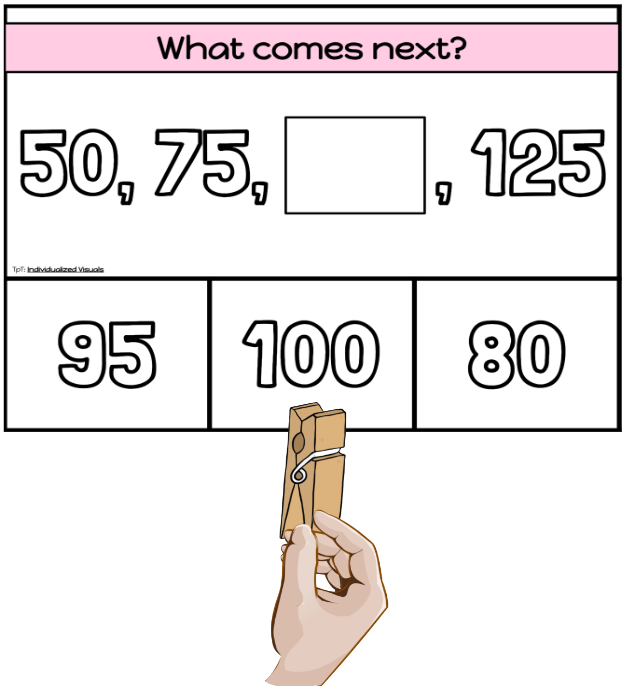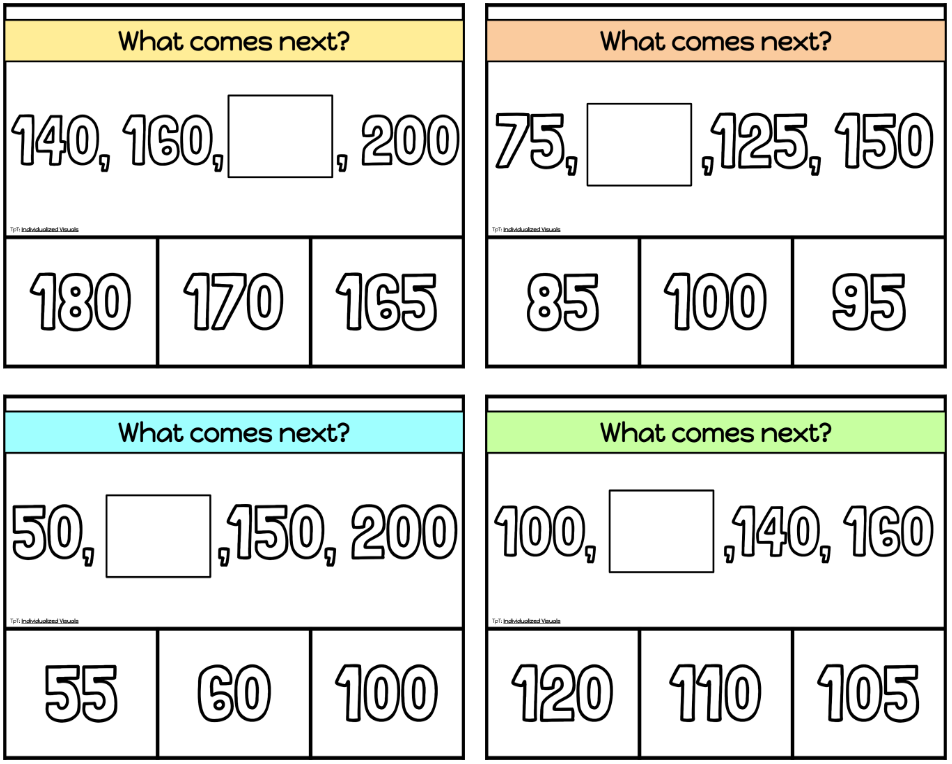Skip Counting Activities for Special Education
Skip Counting by 20s, 25s and 50s
Hey there, fellow educators and math enthusiasts! Today, we're diving into the wonderful world of skip counting with a twist – catering to the needs of our special learners.
Why is skip counting challenging for some learners?
Skip counting can present unique challenges for students with special needs due to various cognitive, developmental, and learning differences. Here are a few reasons why skip counting might be hard for them:
Difficulty in Recognizing Patterns: Skip counting relies heavily on recognizing and understanding numerical patterns. Some students with special needs may struggle with pattern recognition, making it challenging for them to grasp the sequence of numbers when skip counting.
Working Memory Challenges: Skip counting requires students to hold multiple numbers in their working memory while counting. Students with conditions like ADHD or specific learning disabilities may have difficulties with working memory, making it harder for them to retain and recall the sequence of numbers.
Executive Functioning Issues: Skip counting involves several executive functions such as organization, planning, and cognitive flexibility. Students with conditions like autism spectrum disorder (ASD) or executive function disorder may find it challenging to coordinate these functions, leading to difficulties in skip counting.
Attention and Focus: Skip counting can be a repetitive task that requires sustained attention and focus. Students with attention-related disorders such as ADHD may struggle to maintain focus during skip counting activities, leading to errors or inconsistencies in their counting.
Conceptual Understanding: Some students with special needs may have difficulty understanding the underlying concepts behind skip counting, such as the relationship between numbers or the purpose of skip counting in mathematical operations. Without a solid conceptual foundation, skip counting can seem arbitrary and confusing to these students.
Sensory Processing Issues: Skip counting activities often involve auditory and visual stimuli, such as counting aloud or using visual aids like number charts or manipulatives. Students with sensory processing disorders may be overwhelmed or distracted by these stimuli, making it difficult for them to engage effectively in skip counting tasks.
Anxiety or Frustration: For some students with special needs, the pressure to perform or the fear of making mistakes can create anxiety or frustration during skip counting activities. These emotional barriers can further impede their ability to focus, retain information, or participate actively in the learning process.
So, why focus on skip counting by 20s, 25s, and 50s, you ask? Well, let me break it down for you:
Able to identify patterns: Skip counting is like unlocking a secret code in the world of numbers. By teaching skip counting by 20s, 25s, and 50s, we're giving our students the keys to unlock these patterns. Once they see the patterns, they can solve math problems much quicker!
Real-World Relevance: Skip counting isn't just about chanting numbers; it's about understanding how numbers work in the real world. Whether it's counting money, telling time, or measuring ingredients in a recipe, skip counting skills come in handy everywhere. By teaching skip counting by 20s, 25s, and 50s, we're preparing our students for real-life situations where these skills are essential.
Building Confidence: For students with special needs, mastering math concepts can sometimes feel like climbing Mount Everest. But when we break it down into bite-sized chunks like skip counting, suddenly, the summit doesn't seem so far away. By focusing on achievable goals like counting by 20s, 25s, and 50s, we're building our students' confidence one skip at a time.
Strategies For Teaching Skip Counting to
Students with Special Needs
Now, let's talk strategies! When it comes to teaching skip counting to students with special needs, it's all about creativity and flexibility. Here are a few tricks up our sleeves:
Visual Aids Galore: Visuals and manipulatives are a game-changer when it comes to teaching skip counting. Whether it's using colored blocks or drawing out number lines, visual cues help reinforce the concept and make it more tangible for our students.
Multi-Sensory Madness: Who says math has to be boring? Not us! We're all about incorporating movement, music, and hands-on activities into our lessons. Whether it's a skip counting dance party or a tactile counting game, engaging multiple senses helps our students connect with the material in a meaningful way.
Tailored Support: Every student is unique, which means our teaching approach should be too. By providing individualized support and accommodations, we ensure that each student has the tools they need to succeed. Whether it's extra practice, simplified instructions, or assistive technology, we're here to meet our students where they are.
Skip Counting Activities for Special Education
Skip Counting Task Cards
This is a great hands on activity on SKIP COUNTING by 20s, 25s and 50s for special education students! This activity comes with 29 different task cards. Student looks at the number pattern and puts a clothes peg on the next number in the sequence. This activity is ideal for the Grade 2 Number Sense: Whole Numbers Unit, especially for students on modified programming or special education.
There are 2 progressive options!
If students are beginners at skip counting by 20, skip counting by 25 and skip counting by 50, then I'd suggest dividing the task cards according to the number pattern. You can use the task card "title page" to keep them all together. This will make it easier for the students to know what the number pattern is.
Once they have mastered this, you can mix up the task cards! Then the students will need to put their thinking caps on to see what the skip counting pattern is themselves!


